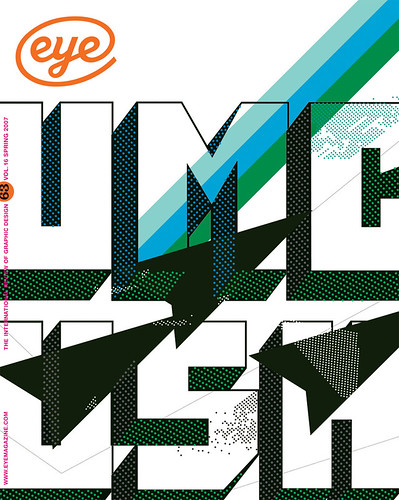Spring 2007
Sixties Soul Sister
Come Alive! The Spirited Art of Sister Corita
By Julie Ault. Design: Nick Bell Design<br>Four Corners Books, £15.95Books on graphic design predictably seem to be polarised into two categories: the well conceived and written but badly designed, and the poorly conceived and written but thoughtfully designed. This book falls into the former category – the design neither strives to find an equivalent to the energy of the works, nor does it manage to present a crisp solution to formatting the images and texts. But, oddly enough, in so doing it is the perfect foil for some interesting writing about the practice of Sister Corita, the designer of posters, murals, billboards and serigraphs, who was principally active in the 1960s (see Eye no. 35 vol. 9). Perhaps this is just as well, since Corita’s oeuvre could just come off as a curiosity – and a book on her as just another coffee table tomb – when it obviously deserves more.
Come Alive! The Spirited Art of Sister Corita avoids this fate by opting to set Corita’s work firmly within the political context of the 1960s. This is not a surprising tactic considering that the editor of the volume is Julie Ault, a one-time member of the activist art ensemble Group Material. It follows that in her extended essay that opens the book, Ault emphasises certain aspects of Corita’s production over others. So the way the work was printed in relatively large editions, and priced cheaply enough to be democratically circulated and disseminated at community centres and fairs, takes centre stage. And both the carefully aimed messages in the texts and the often politically heated conditions that generated the work in the first place are crucial to her polemic. Which is not to say Ault is not sensitive to other aspects of the work, such as the way Corita appropriated the vernacular vocabulary of corporate branding and advertising so as to ensure that her work and its messages were accurately situated within a popular contemporary language. By example, Ault discusses the way the four-part print Power up from 1965 derives from a petrol advertisement and yet in its new context as a stand-alone print has a different resonance. This is significant, since in each case the editing and re-contextualisation of the visual language alters it completely, often tending to emphasise a kind of 1960s, proto-political feel-good vibe.
A thoroughly researched series of images – some simply presenting the work, others more documentary in style – follows Ault’s essay. Some situate the works within the contexts in which they were disseminated, and this carefully supports Ault’s central argument for a type of graphic design practice that is situated historically and politically in its moment – the key message driving the book.
Alex Coles, art critic, London
First published in Eye no. 63 vol. 16 2007
Eye is the world’s most beautiful and collectable graphic design journal, published quarterly for professional designers, students and anyone interested in critical, informed writing about graphic design and visual culture. It is available from all good design bookshops and online at the Eye shop, where you can buy subscriptions and single issues.

